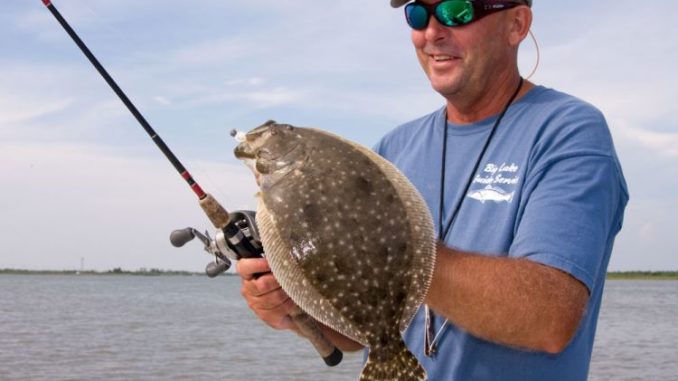
Hooking flounder can be a bit of a challenge.
Capt. Jeff Poe with Big Lake Guide Service feels like anglers miss a lot of flounder bites because the fish’s mouths are made for grabbing and holding.
“That means your bait sometimes won’t even move in their mouths when you set the hook,” he said. “I’ve landed some flounder that weren’t even hooked. They were just holding on to the lure.”
That’s why Poe tends to fish with a stiffer rod than he normally would when he’s specifically targeting flounder. In general, he’s looking for something with a stiff enough backbone to move the hook in their mouths.
Of course you’ve got to feel the bite before you can hook them — and even that can be a challenge.
If they’re not really aggressive and hammering your baits, they bite in such a way that all you’ll really notice is a heavy or slack sensation. This mainly happens when they pick up your bait and swim right at the boat.
It’ll feel like you’re dragging a wet rag through the water. The trick is to set the hook any time you feel something just a little bit different.